calsfoundation@cals.org
Ozan (Hempstead County)
aka: Mound Prairie (Hempstead County)
| Latitude and Longitude: | 33°50’52″N 093°43’09″W |
| Elevation: | 387 feet |
| Area: | 0.33 square miles (2020 Census) |
| Population: | 50 (2020 Census) |
| Incorporation Date: | July 25, 1888 |
Historical Population as per the U.S. Census:
|
1810 |
1820 |
1830 |
1840 |
1850 |
1860 |
1870 |
1880 |
1890 |
1900 |
|
– |
– |
– |
– |
– |
– |
– |
– |
91 |
118 |
|
1910 |
1920 |
1930 |
1940 |
1950 |
1960 |
1970 |
1980 |
1990 |
2000 |
|
120 |
155 |
124 |
133 |
124 |
95 |
134 |
111 |
69 |
81 |
|
2010 |
2020 |
|
|
|
|
|
|
|
|
|
85 |
50 |
|
|
|
|
|
|
|
|
Ozan is a railroad town on U.S. Highway 278 in northern Hempstead County. Although never a large settlement, it has played a significant role in Arkansas history, particularly that of the Methodist Church in Arkansas.
When European explorers first entered the land that would become Hempstead County, they encountered the Caddo, who lived in villages along the Red River. Europeans and Americans were particularly attracted to the rich soil of southwestern Arkansas. After the Louisiana Purchase of 1803, the Caddo—whose numbers were greatly reduced due to diseases introduced by Europeans—gradually were pushed out of the area, ending up in Indian Territory (now Oklahoma) by the time Arkansas achieved statehood in 1836.
The name Ozan appears to be a form of a French name: possibly “Aux d’Han” or “Aux Anes.” The surrounding prairie was likewise designated “Prairie d’Han” or “Prairie aux Anes.” “Han” is a French word for a “caravansary,” and “Anes” means donkey. “Aux” means “at” or “near”; the name that became Ozan was first given to a stream and later to a settlement on that stream.
John Pettigrew acquired a patent to the land where Ozan would be built in 1837, ten years after he acquired other land in the same township. Pettigrew was joined as a landowner in 1856 by William Sanders.
American settlers referred to the region between Ozan and Washington (Hempstead County) as “Mound Prairie.” William Stevenson, a Methodist missionary, came to the Mound Prairie area around the beginning of 1817 and began a congregation. Preacher John Henry Sr. remained at the location as Stevenson continued his travels, and Henry is thought to have preached the first Methodist sermon in Arkansas while on his way to Mound Prairie in 1817.
A log church building was then constructed—said to be the first Methodist church in Arkansas—but the congregation moved the next year to a different building, which came to be known as Henry’s Chapel.
Nathan Smith, a country doctor living in Washington, bought land along the highway south of Ozan in 1819, where he operated a traveling medical practice. The community, only a few miles from prosperous Washington, grew slowly. A post office was established in 1852. The nearest Civil War event to Ozan was the skirmish at Prairie d’Ane, part of the Camden Expedition.
With the arrival of railroads, Hempstead County changed dramatically. The timber industry exploded into the area, offering jobs and clearing land for larger farms. It is hard to say whether Thomas Whitaker Rosborough had the town of Ozan in mind when he founded Ozan Lumber Company a few miles away in the city of Prescott (Nevada County) in 1891, but no other explanation of the name of his company has been offered. The Arkansas and Louisiana Railroad—an extension of the St. Louis, Iron Mountain and Southern—constructed a branch line from Hope (Hempstead County) through Ozan to Nashville (Howard County) in 1884.
Ozan was incorporated as a town in 1888. The Methodist congregation built a new church building in 1890; in 1982, it was placed on the National Register of Historic Places, but it has evidently since deteriorated. It was removed from the register in 1999.
While other cities grew during the lumber boom and then declined, Ozan remained a small town throughout its existence. Construction of the Southwest Proving Ground in Hempstead County during World War II closed many farms in the area. The post office was closed in 1965 but reopened sometime later. By the end of the twentieth century, Ozan’s town government considered declaring bankruptcy, but the courts would not allow the action, saying that the financial troubles of the town were not as bad as they seemed. Willie Carrigan, then mayor of Ozan, told a reporter, “We’re still striving to make it, but we’re thriving, and we’re not really suffering. We’re just having to take our time and use our funds where we know we need them and hopefully, the little town may grow again.”
Businesses in the Ozan zip code include a cleaning service and a roofing business. Although the Methodist church is gone, there is a Christian Methodist Episcopal (CME) church, a Church of God, and a Church of God in Christ. In 2010, the population of the town was 85, with over sixty percent African-American residents.
For additional information:
Britton, Nancy. Two Centuries of Methodism in Arkansas, 1800–2000. Little Rock: August House, 2000.
Newsom, Jim. “Tiny Town of Ozan, Big on Sense of Community, Hopes It Can Grow Again.” Arkansas Democrat-Gazette, December 31, 1998, p. 9B.
Smith, Kenneth L. Sawmill: The Story of Cutting the Last Great Virgin Forest East of the Rockies. Fayetteville: University of Arkansas Press, 1986.
Steven Teske
Butler Center for Arkansas Studies
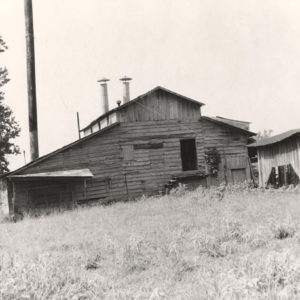 Goodlet Cotton Gin
Goodlet Cotton Gin 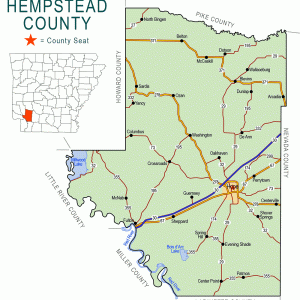 Hempstead County Map
Hempstead County Map 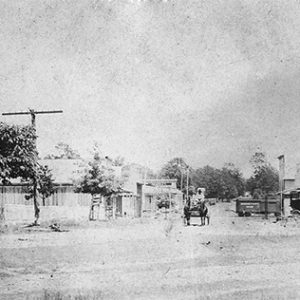 Ozan
Ozan 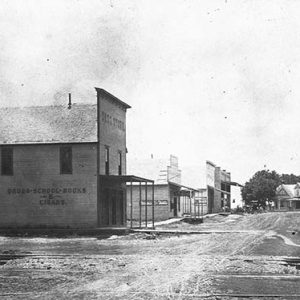 Ozan
Ozan 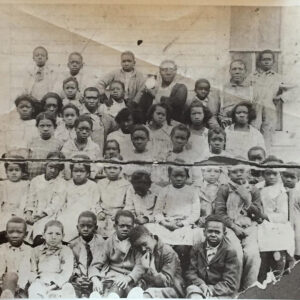 Ozan Students
Ozan Students 




My great-great-grandfather moved to Ozan and had twenty-one children. He built a log cabin in the hills. At one time, he owned almost all of Ozan. I would love for someone related to share pictures and tell more stories about my people. Granddad’s name: Robert Keels.